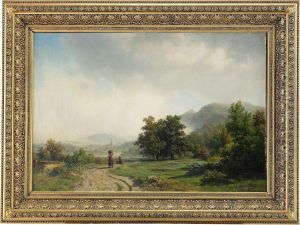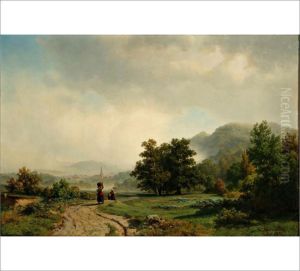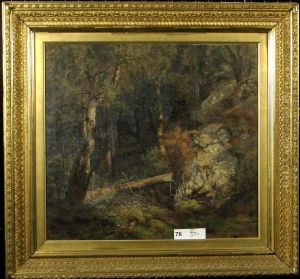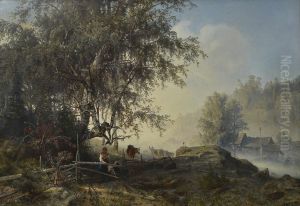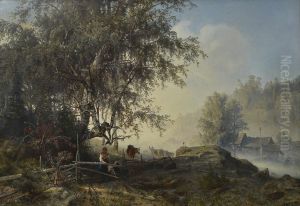Werner Holmberg Paintings
Werner Holmberg was a Finnish painter born on October 14, 1830, in Viipuri, which was then a part of the Grand Duchy of Finland, within the Russian Empire. His early life and passion for art were shaped by the cultural milieu of his homeland and the broader European artistic movements of the 19th century. Holmberg's artistic journey began under the tutelage of Robert Wilhelm Ekman in the city of Turku and continued at the Helsinki Drawing School, where he further honed his skills.
Holmberg's artistic pursuits led him to Düsseldorf in 1853, which at the time was a renowned center for art and painting, particularly known for its landscape painting. Here, he studied at the Düsseldorf Academy of Arts under the guidance of professors such as Johann Wilhelm Schirmer and Hans Fredrik Gude, both of whom were prominent figures in the Düsseldorf school of painting. This school was celebrated for its detailed, romanticized landscapes, which combined meticulous technique with a sense of poetic naturalism.
The influence of the Düsseldorf school was evident in Holmberg's work, which often featured the expansive Nordic landscapes of his native Finland. His paintings were characterized by an attention to the subtleties of light and atmosphere, with an emphasis on the serene and sometimes melancholic beauty of the Finnish countryside. Despite his relatively short career, Holmberg managed to create a significant body of work that left a lasting impact on Finnish art.
Tragically, Werner Holmberg's promising career was cut short by illness. After contracting a severe fever, he passed away on April 3, 1860, in Düsseldorf, at the young age of 29. His death was a loss to the Finnish art world, as he was among the first Finnish artists to gain recognition both nationally and internationally. Today, Holmberg is remembered for his contributions to Finnish landscape painting and his role in bringing the techniques and sensibilities of the European art scene to Finland.
